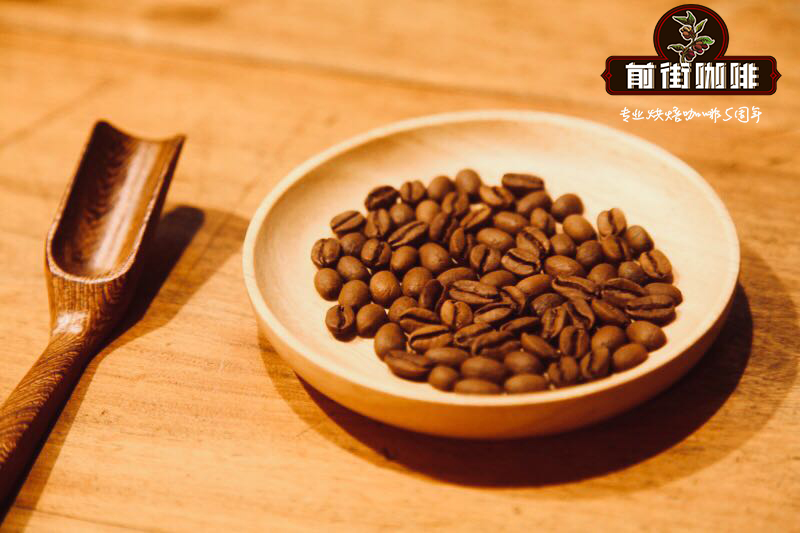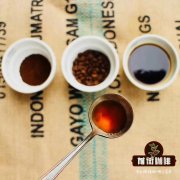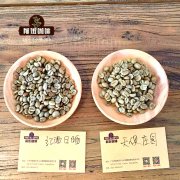Why some Arabica coffee beans are so expensive Arabica coffee price introduction

Professional coffee knowledge exchange more coffee bean information please follow the coffee workshop (Wechat official account cafe_style)
They are also members of Arabica, why are some coffee beans so expensive?
There are tens of thousands of coffee tree species around the world, and many varieties are gradually emerging to say hello to you. I also hope that while tasting coffee, you can understand "coffee". Where does it come from, what benefits it has in entering our bodies, and how to brew a cup of coffee that we like? after that, we will communicate and learn with you one by one.
Different growth conditions, different nutrient intake, and different varieties will cause the quality and taste of coffee to be completely different. Coffee trees may vary according to latitude, altitude, sunshine time, soil mineral quality, temperature difference, fertilization, medication problems and growth cycle, etc., especially in the selection of cultivation environment, orientation, varieties suitable for altitude, abundant temperature difference Rain Water, and prevention of excessive sunshine, the best growth conditions of coffee should be considered.
Coffee trees are only suitable for planting in the tropics or subtropics. At present, there are three native species of coffee: Arabica, Robusta and Liberica. The origin and characteristics of the coffee are as follows:
Arabica is native to Ethiopia and accounts for about 70% of the world's total output. Arabica is a tropical and subtropical high-altitude crop, so it is not resistant to high temperature, dryness, excessive humidity or low temperature frost.
Arabica coffee was originally grown in Ethiopia and was gradually introduced to high elevations in other subtropical climates. It is very sensitive to the temperature and humidity of the growing environment, so the areas suitable for the growth of Arabica coffee trees are mostly located in the coffee belt with alpine terrain between the Tropic of Cancer. Mainly grows in the 1000 murmur2000 Michael altitude area with fertile soil, rich mineral, mild climate and abundant rainfall. The higher the altitude, the better the quality of Arabica coffee beans. Arabica coffee beans with good quality are the main force of high-quality coffee beans, with rich aroma, rich mellow, fresh taste, elegant flavor, and rich in natural sour taste. Coffee beans are characterized by oval flat appearance, curved grooves, green or light green raw beans, and lower caffeine content than Robusta coffee beans.
The main growing countries are: Colombia, Costa Rica and Nicaragua in Central and South America; Ethiopia and Yemen in Africa.
Robusta) Robusta is a variety found in the African Congo, belonging to low altitude growth, disease-resistant care easy, and resistant to high temperature, rainy and humid, it has obvious "three high" characteristics: high bitterness, high caffeine, high aroma, but its aroma is slightly mildew, need to be deeply baked to overcome the unacceptable mildew smell, after deep baking Robusta will show a special scorched flavor. Many people like to use robusta in their coffee, so high bitterness in iced coffee will add sugar and cream, but high caffeine cannot be removed, which may be related to high levels of chlorogenic acid. as a result, many people will have palpitations, discomfort, and poor sleep.
Robusta coffee tree is suitable for growing at low altitude. It is especially suitable for growing at an altitude of 200 Murray 300 meters. It has excellent resistance to high temperature tropical climate, and its disease resistance is strong. It can grow fast and yield is rich without too much care. It has a wide range of planting, accounting for about 20% of the world's output. Coffee beans are round in shape and brown in color. Robusta coffee beans are poor in flavor. Usually once roasted, it will show a strong bitter taste, weak aroma, no fruit acidity, bitter taste is much stronger than Arabica, the price is also lower than Arabica, caffeine content is 3 times that of Arabica coffee beans, low-cost robusta is mostly used to process instant coffee or canned coffee.
Related recommendation: how about Arabica coffee? characteristics and taste of Arabica coffee
Important Notice :
前街咖啡 FrontStreet Coffee has moved to new addredd:
FrontStreet Coffee Address: 315,Donghua East Road,GuangZhou
Tel:020 38364473
- Prev

How about Arabica Coffee basic knowledge and characteristics of Arabica Coffee
Professional coffee knowledge exchange more coffee bean information please follow the coffee workshop (Wechat official account cafe_style) Arabica, fine coffee turquoise bioscience in the boundary, gate, class, order, family, genus, species division, do you still remember? Don't say you gave it back to the junior high school biology teacher. A few years ago, the coffee industry began to emphasize Arabica coffee beans; in fact, it is now a boutique.
- Next

Teach you to distinguish the types of coffee beans and you can see what coffee beans Starbucks uses at a glance.
Professional coffee knowledge exchange more coffee bean information Please follow the coffee workshop (Wechat official account cafe_style) from the appearance, Arabica beans are long and flat, the central line is S-curve, Robes Tadou is strong and round in shape, and the central line is closer to a straight line. If you want to understand coffee, you must start with coffee beans. There are more than 100 kinds of coffee in the world.
Related
- Beginners will see the "Coffee pull flower" guide!
- What is the difference between ice blog purified milk and ordinary milk coffee?
- Why is the Philippines the largest producer of crops in Liberia?
- For coffee extraction, should the fine powder be retained?
- How does extracted espresso fill pressed powder? How much strength does it take to press the powder?
- How to make jasmine cold extract coffee? Is the jasmine + latte good?
- Will this little toy really make the coffee taste better? How does Lily Drip affect coffee extraction?
- Will the action of slapping the filter cup also affect coffee extraction?
- What's the difference between powder-to-water ratio and powder-to-liquid ratio?
- What is the Ethiopian local species? What does it have to do with Heirloom native species?

